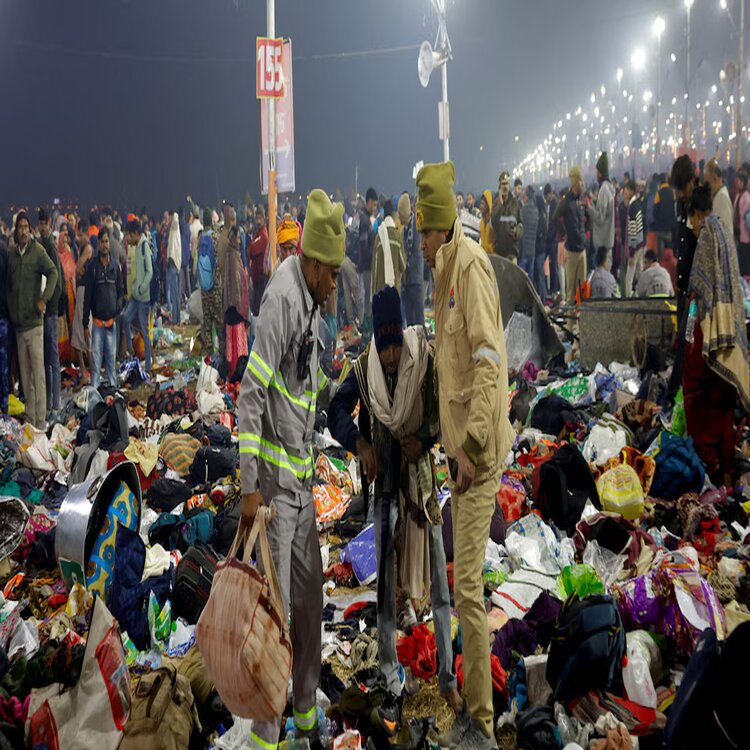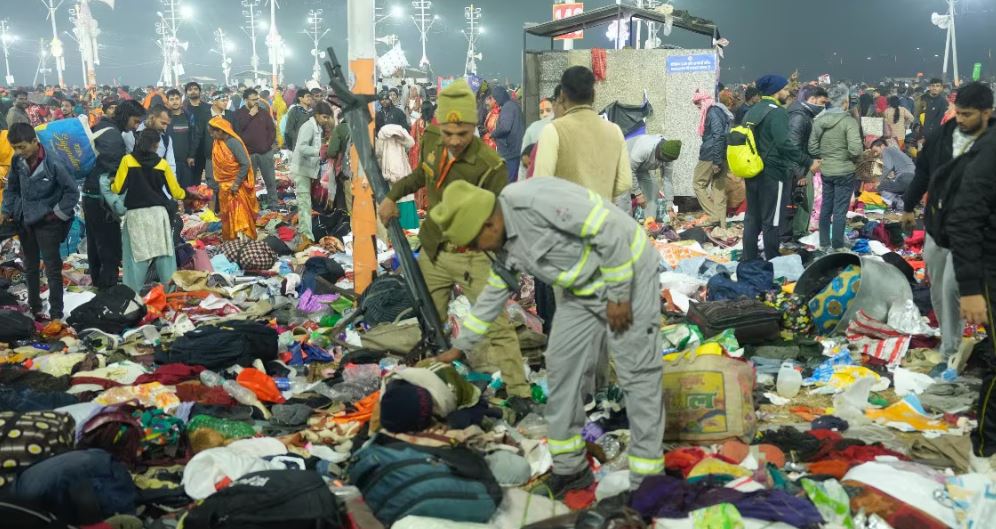Mahakumbh Stampede – A Tragedy of Negligence
Editor : Rishi | 29 January, 2025
Stampede which happened on the night of 28 January raising questions on the Yogi Government

Source or Copyright Disclaimer
The Mahakumbh Mela, a sacred congregation that attracts millions of devotees from across the country and beyond, is a testament to India's deep-rooted faith and cultural vibrancy. However, time and again, this grand event has been marred by tragedies, often resulting from administrative inefficiencies and lapses in governance. The recent stampede at the Mahakumbh once again exposes the glaring inadequacies in crowd management, emergency preparedness, and infrastructural planning.
Despite prior warnings and experiences from past stampedes, authorities once again failed to anticipate and control the overwhelming rush of pilgrims. The lack of proper crowd regulation mechanisms, ineffective barricading, and poor communication between security forces turned a moment of spiritual fervour into chaos. Reports suggest that a breakdown in crowd control measures led to the stampede, raising critical questions about the preparedness of the administration.
The government's responsibility in ensuring the safety of its citizens is paramount. The tragic loss of lives at the Mahakumbh reflects a systemic failure in planning and execution. Several key issues stand out:
Inadequate Crowd Control Measures: With an event of such magnitude, robust crowd control systems, including digital tracking, controlled entry points, and exit strategies, should have been in place. The absence of these mechanisms allowed an uncontrollable surge of pilgrims, ultimately leading to the disaster.
Poor Infrastructure and Emergency Response: The medical and emergency response teams were either ill-equipped or failed to reach the affected area on time. The lack of ambulances, trained medical staff, and accessible emergency exits further exacerbated the crisis.
Failure in Coordination: A lack of coordination among various government bodies, including law enforcement, civic authorities, and transport agencies, played a significant role in the catastrophe. Had there been a synchronized effort, the situation could have been managed more effectively.
This tragic incident demands accountability. While inquiries and committees are often set up post-disaster, the real need is for tangible action. Government officials responsible for planning and execution must be held accountable, and necessary punitive actions should be taken to ensure that such lapses are not repeated.
If the government truly intends to prevent such tragedies in the future, it must implement stringent measures, including:
Technology-Driven Solutions: Real-time crowd monitoring through drones, AI-based predictive analytics, and GPS-enabled tracking can significantly reduce the risk of overcrowding.
Strengthened Medical Infrastructure: More mobile health units, better-equipped hospitals near key locations, and trained emergency responders must be deployed.
Pre-Event Drills and Public Awareness: Simulated drills involving all stakeholders, including law enforcement, transport authorities, and volunteers, should be conducted before the event. Additionally, pilgrims must be educated on safety protocols.
Transparent Planning: The government must involve independent experts and stakeholders in the planning process to ensure foolproof safety measures.
Faith should not come at the cost of lives. The Mahakumbh is a celebration of spirituality and unity, but the recurrent tragedies taint its sanctity. The government, rather than merely reacting to such disasters, must take proactive measures to prevent them. The lives lost in this stampede should serve as a wake-up call, compelling authorities to prioritize safety over complacency. Only then can the Mahakumbh be a truly divine experience, free from fear and tragedy.




